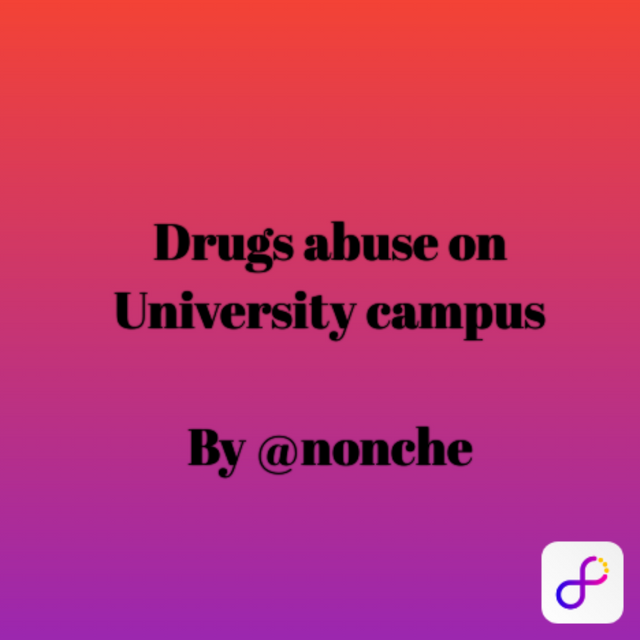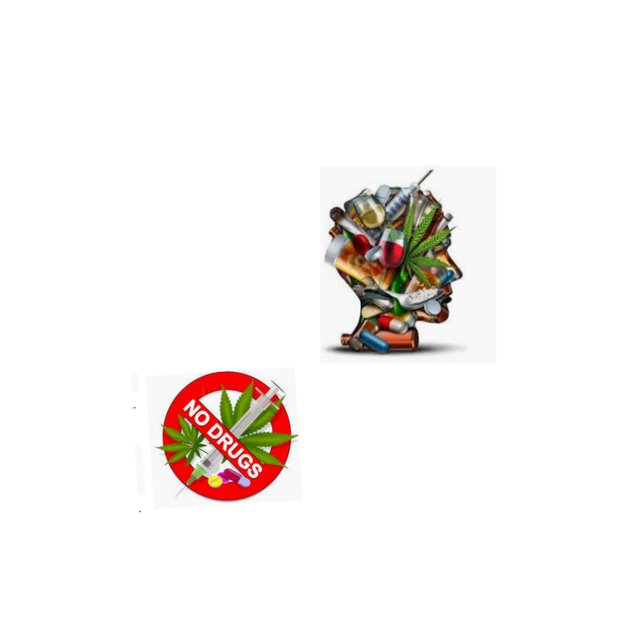Drug abuse on University campus🌿🍺🚬

Substance or drug abuse affects the academic life of University students resulting in inadequate attendance, poor academic performance, and conflict with others among other issues. It's adverse effect on the physical and mental health and sexual practice of University students cannot be emphasized.
Drug abuse among University students has become a major global concern and a serious challenge. Commonly abused substances include alcohol, tobacco, cannabis, prescribed drugs and other psycho active substances.

A quick search on the website for the articles on the subject using drugs, key terms yielded to almost nothing. This is despite the fact that the academic health and social consequences of substances abused at global level are immense. A series of published reports indicate that worldwide ,5% of all death of young people between the ages of 15 and 29 are attributed to alcohol use.
College is a time for experimentation for many young adults, and this can lead them to engage in risky behaviors. Binge drinking, prescription drug abuse, and recreational drug use are all common problems on college campuses.Those who are enrolled in a full-time college program are twice as likely to abuse drugs and alcohol than those who don’t attend college.
Starting out in college produces some natural social anxiety for many students. The temptation to drink is strong because college students overwhelmingly find that alcohol makes socializing easier. Not all college students immediately start binge drinking and doing drugs, but routinely drinking to have more fun leads many students toward addiction.The high rates of drug abuse among college students can be attributed to a number of factors, including:
Stress. As students are facing the high demands of coursework, part-time jobs, internships, social obligations and more, many turn to drugs as a way to cope.
Course load. More students than ever are taking stimulants, such as Adderall, to help them stay awake long enough to study or complete assignments by their due dates. All too often, these prescription drugs are obtained without a legitimate prescription.
Curiosity. College students are exploring many new aspects of their lives in personal and professional realms. It’s not uncommon for that self-exploration to dip into drug experimentation.
Peer pressure. College students who are surrounded by other people experimenting with recreational and performance-enhancing drugs are more likely to try these substances for themselves.
Drugs of Choice on College Campuses
Trends change over time and no drug is immune to college experimentation. However, there are a few substances that are consistently abused among college students. These include:
Alcohol makes up the vast majority of substance-related problems on college campuses. Because drinking is often socially acceptable, recognizing a problem in college students who drink can be difficult.
Dubbed the “study drug,” Adderall and other stimulants are increasing in popularity among college students who are facing pressure to meet all of their academic requirements.
As legislation tips in favor of marijuana legalization, more college students are turning to pot as their drug of choice. On some campuses, marijuana use u even that of alcohol.
Side Effects of Drug and Alcohol Consumption
The side effects of these drugs on consumers are far- reaching. Medical experts have identified some health hazards related to drug and alcohol abuse.
- Anaemia
- cancer
- cardiovascular diseases
- depression
- high blood pressure
- mental problems
- gastrointestinal intestinal problems
- Nervousness
In addition to these side effects are outrageous acts of moral decadence which could ultimately lead youths to become school dropouts. Legal experts have warned of legal sanctions including jail terms.
Prevention Strategies for Substance Abuse in College
Because prevention is so important, it is frequently discussed and researched. Data on success rates can be hard to confirm, so many colleges will take multiple preventative measures to see what works. Some of the most popular forms of prevention include:
Education
Informing students of the negative health effects of drinking and substance abuse can help them make educated decisions regarding their alcohol consumption. By understanding what excessive alcohol can do to their bodies, college students may choose to limit how much they drink.
Law and rule enforcement
Many laws already exist to limit underage drinking and dangerous substance abuse. Enforcing the legal drinking age has shown to be one of the most effective ways to reduce alcohol-related problems. Retailers and school administrators can help cut down on the amount of alcohol- and substance-related problems by enforcing these federal laws and campus rules consistently.
Restrictions on bars
One way to reduce excessive and underage drinking is through limiting the proximity of bars and liquor stores to each other and to campus. Studies have shown that alcohol-related incidents are more common in areas where drink specials are highly advertised, especially when targeting college students.
Thanks